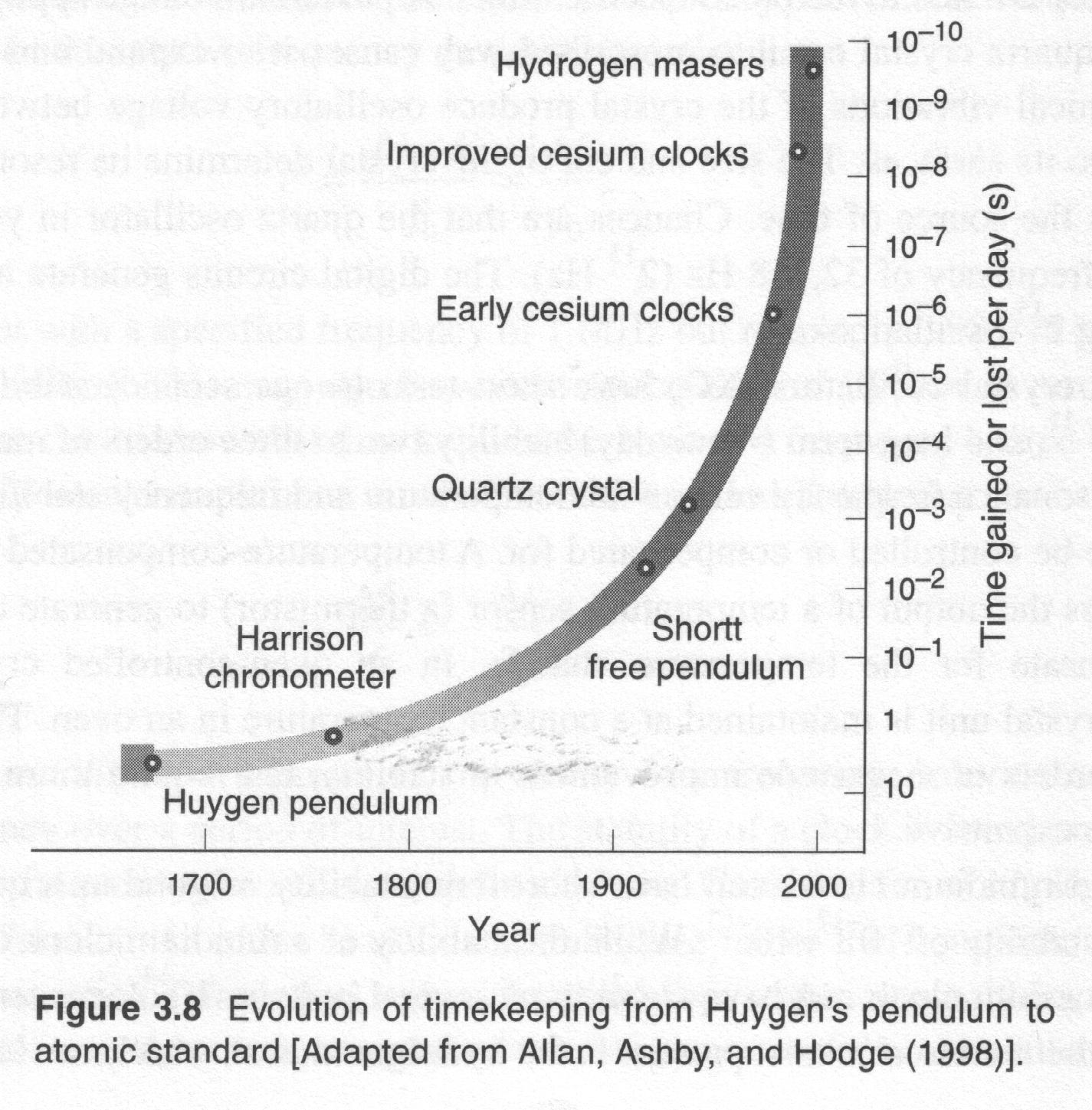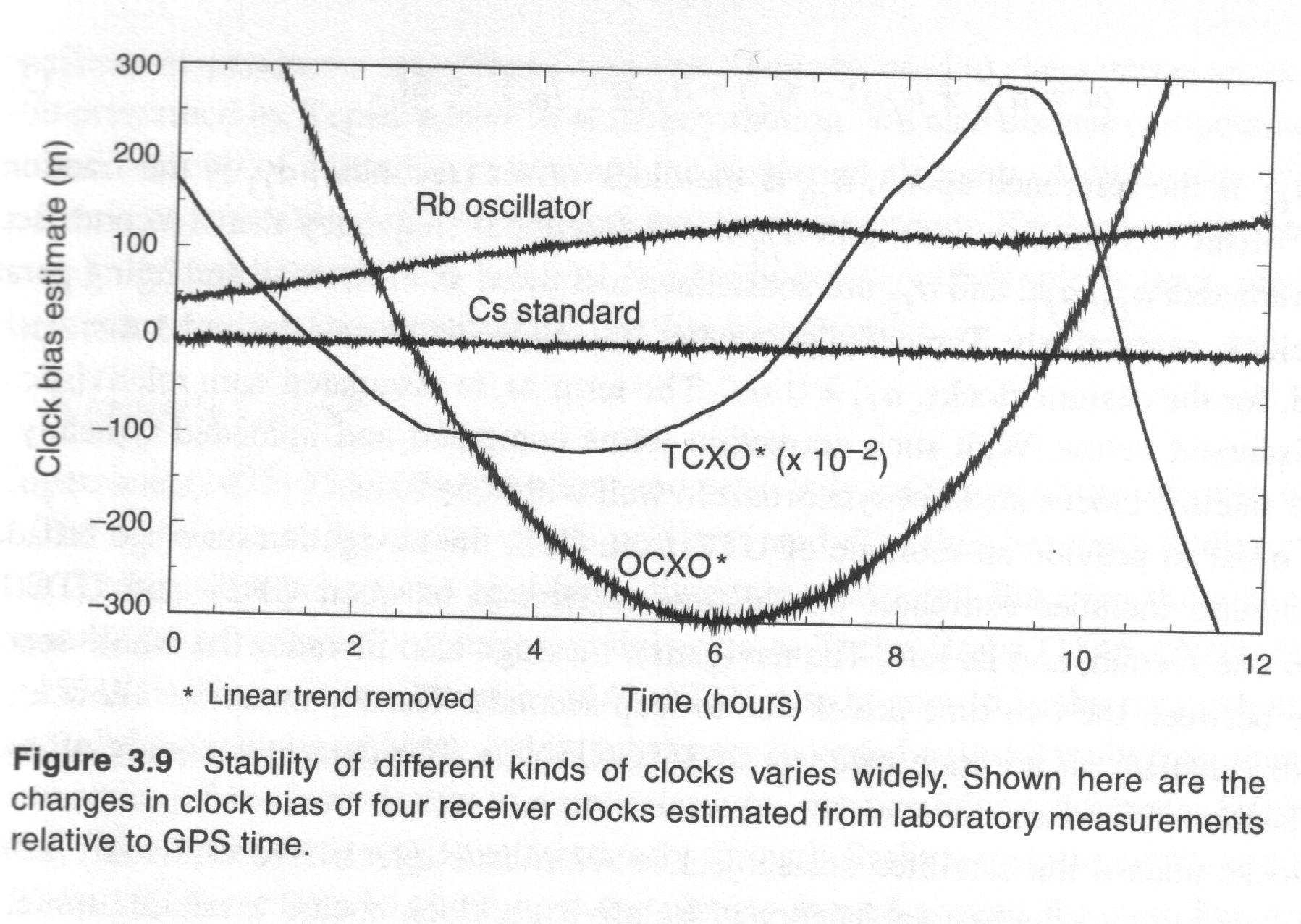


Next:
4.3 Electromagnetic signal propagation
Up: IV. Physical
fundamentals
Previous:
4.1 Reference Coordinate Systems
4.2.1 Basic Considerations
- There are 3 groups of time scales of importance:
- The time-dependent orientation of the Earth with respect to
the inertial
space (CTS vs CIS), due to the diurnal rotation of the Earth (Sidereal
Time and Universal Time.
- For the description of the satellite motion: Dynamical
Time
given by the Mechanics of the orbital motion of the Earth around the
Sun.
- For the precise measurements of signal travel times, it is
necessary
a uniform, precise and easily accessible time scale: Atomic Time
related with Nuclear Physics phenomena.
- How timing errors in satellite geodesy are related to a position
error of 1 cm:
- Earth rotation:
-

- Orbital motion:
-

- Signal travel time:
-

4.2.2 Sidereal Time and Universal Time
4.2.3 Dynamical Time
The Dynamical Time corresponds to the concept of the inertial
time,
i.e. the time scale that fulfills exactly the equation of motion of
celestial bodies:
- Barycentric Dynamical Time (TDB) is derived from
orbital motions
referred to the barycenter of the solar system (Coordinate time
in
the terminology of General Relativity).
- Terrestrial Dynamical Time (TDT) is referred to the
geocenter
(Proper Time with periodic variations up to 1.6 milliseconds,
but
common between satellite and Earth).
4.2.4 Atomic Time
The International Atomic Time (TAI) is defined in such a way
that
its second equals to the TDT second (its unit was derived
from the mean duration of the solar day between 1756 and 1895
and it has been adopted
as the International System of units (SI) second):
The second is the duration of 9,192,631,770 periods of the
radiation
corresponding to the transition between the two hyperfine levels of the
ground state of the Cesium 133 atom
TAI is defined by a large number of Cesium clocks in various
laboratories and
agreed with the epoch of UT1 on January 1, 1958, and due to the Earth
deceleration:
| TAI-UT1 |
= |
+6.  1 on January 1,
1968 1 on January 1,
1968 |
|
= |
+16.  4 on January 1,
1978 4 on January 1,
1978 |
|
= |
+23.  6 on January 1,
1988 6 on January 1,
1988 |
|
= |
+24.  7 on January 1,
1990 7 on January 1,
1990 |
|
= |
+26.  1 on January 1,
1992 1 on January 1,
1992
|
And:

For many applications, as navigation, an uniform scale but adapted
to UT1:
the Coordinated Universal Time (UTC): it is atomic
but the
difference with the UT1 should not exceed 0.7 seconds (leapseconds):

The GPS time (GPST):
- It has identical epoch than UTC on January 6, 1980 (starting
epoch for GPST).
- It is an atomic scale and it is not incremented by the
leap seconds.
- The unit of GPS is the SI (TAI) second.
- GPST is only derived from clocks of the Control segment, so it
differ a bit referring to the TAI.

ranging  between -1376 ns in Jan 1, 1989 to 232 ns in Jan 1, 1992.
between -1376 ns in Jan 1, 1989 to 232 ns in Jan 1, 1992.





Next:
4.3 Electromagnetic signal propagation
Up: IV. Physical
fundamentals
Previous:
4.1 Reference Coordinate Systems
Manuel Hernandez Pajares
Thu Jun 4 14:25:37 GMT 1998







